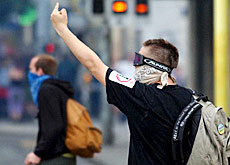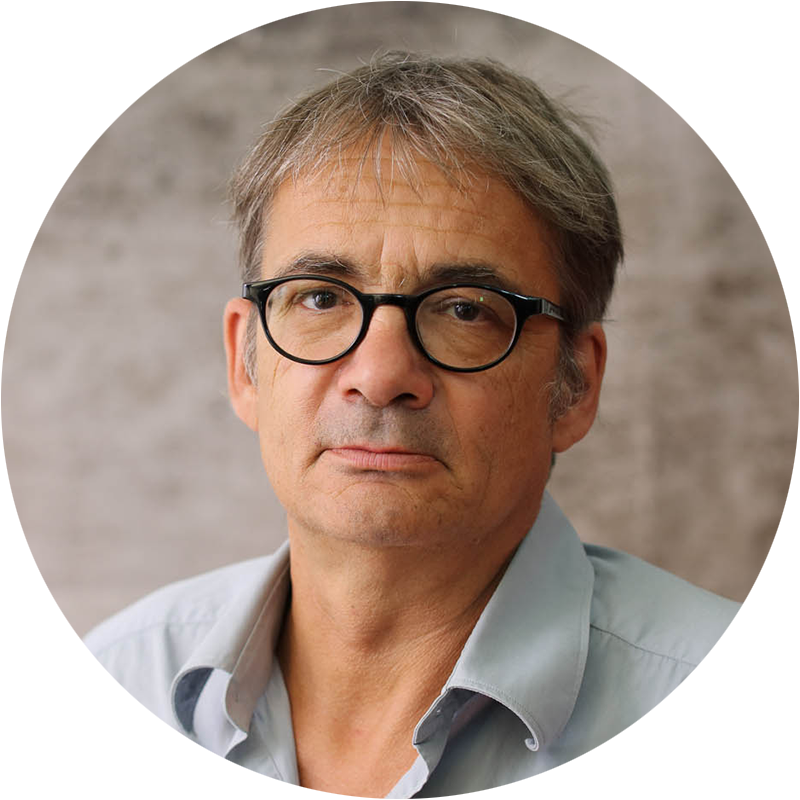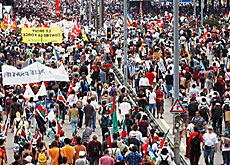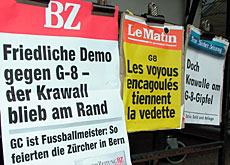Swiss youth drawn to extremist politics

Swiss youths seem to be increasingly turning to violence to express their political views.
Experts say the trend is linked to growing frustration among youngsters who feel excluded from mainstream politics and society.
This year has seen a series of pitched street battles between left- and right-wing extremists, as well as violent demonstrations targeted at the G-8 summit on Lake Geneva in June; and February’s World Economic Forum (WEF) summit in Davos.
Many Swiss, accustomed to consensual-style politics and peaceful protests, have been horrified at the apparent readiness of young people to turn to violence to express their dissatisfaction with the establishment.
The year started with images of “anti-globalisation activists” rampaging through Bern after the WEF summit. Similar scenes were splashed across television screens in June as members of the “Black Block” set fire to and destroyed a number of businesses in Geneva and Lausanne.
Towns across much of the country have also seen street battles between rival gangs – in French-speaking Yverdon last month, a far-right extremist was murdered during a street fight.
And several towns in German-speaking Switzerland have been shaken by pitched battles between extreme-right skinheads and anti-fascist militants.
Frustrated
“The extremists on both sides are frustrated by a society which constantly invokes the values of youth, but which, in practice, is finding it increasingly difficult to integrate young people professionally and socially,” says Dominique Gros, a sociologist at the Geneva educational research department.
Experts say youngsters who experience this sense of exclusion – whether on the extreme left or right – typically react by rejecting society and its institutional framework.
They differ, though, in the way they choose to vent their frustration.
Sociologists say that skinheads and extreme-right political organisations tend to attack individuals or groups of individuals.
The nationalists of the “Avant-Garde” movement, for instance, rail against “stateless” capitalism and pillory Jewish businessmen, the “red and anti-racist puppets”, and immigrants from overseas.
Symbols under attack
On the extreme left, the main targets are institutions or symbols of the system. These include the small businesses sacked by the members of Black Block.
“In the 1960s, the Situationists were already claiming that the tearaway smashing of a shop window was the ‘nec plus ultra’ [embodiment] of protest”, recalls Dominique Gros.
He says many extreme-left organisations obviously look back to their Marxist, Leninist or Guevarist roots. “But that is an idealised or romantic point of view.”
A long-time adherent of the anarchist cause, Aristides Pedrazza, believes that: “Most of these neo-Leninist movements reject the military and totalitarian character of historical communism.”
This view is confirmed by 28-year-old Laurent Tettamenti, founder of “Les communistes”, a movement which is beginning to gain ground in French-speaking Switzerland.
“We cannot identify with the existing extreme-left organisations. The way they work internally leads to sectarianism and the same people always control everything.”
Rural and urban
Clashes between left- and right-wing extremists tend to be more about controlling territory.
Hans Stutz, a specialist on the extreme right in Switzerland, says the main point of clashes in urban centres like Bern, Winterthur or Frauenfeld “is to achieve control of the streets”.
Such violence is less of a problem in Zurich and Basel, he adds, because there “the struggle has [already] been won by the extreme left”.
Like mainstream political organisations, the extremists have their powerbases in certain areas.
“The skinheads recruit mainly in country areas and rural settlements. The extreme left, on the other hand, enlists its followers mainly in the big towns,” notes Dominique Gros.
Stutz agrees: “The neo-fascists have managed to establish themselves in areas where the population is mainly conservative and nationalist.”
Mainstream effects
In Gros’s view the extreme left is better placed to win support in Switzerland because the rhetoric of the right-wing Swiss People’s Party – one of the four in government – tends to attract many youngsters.
“On the right, the populist People’s party is adopting some of the xenophobic ideas of the extreme right,” he notes.
“It is also becoming very critical of the government and the rest of the political class”.
The situation is different on the left, where the Social Democrats – also in government – hesitate to play an opposition role.
“Young people with radical ideas find it hard to see any difference between the Social Democrats and the parties of the centre right,” observes Gros.
“For ten years or so, we have been witnessing the birth of a social movement. But it is developing as an anti-globalisation force, apart from the traditional left.”
swissinfo, Frédéric Burnand in Geneva
Swiss youths seem to be turning to violence to express their political views.
Experts say youngsters are venting frustration because they feel excluded from politics and society.
2003 has been a violent year – there have already been street battles between left- and right-wing extremists and violent anti-G8 and WEF demonstrations.

In compliance with the JTI standards
More: SWI swissinfo.ch certified by the Journalism Trust Initiative



You can find an overview of ongoing debates with our journalists here. Please join us!
If you want to start a conversation about a topic raised in this article or want to report factual errors, email us at english@swissinfo.ch.